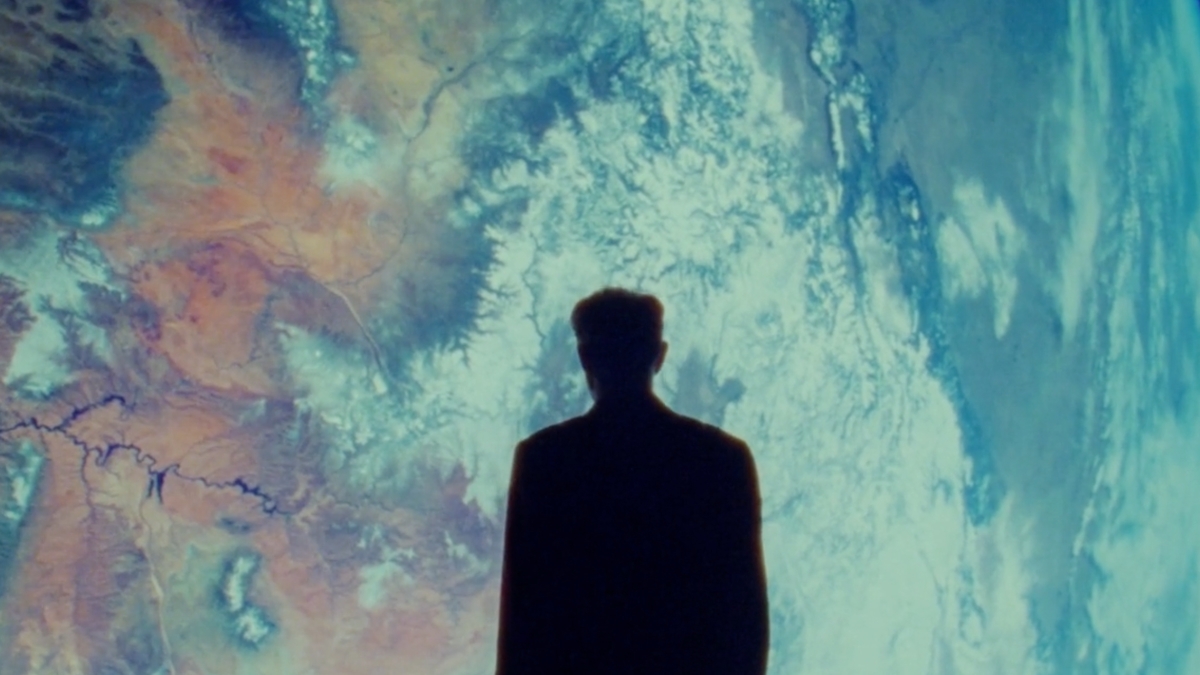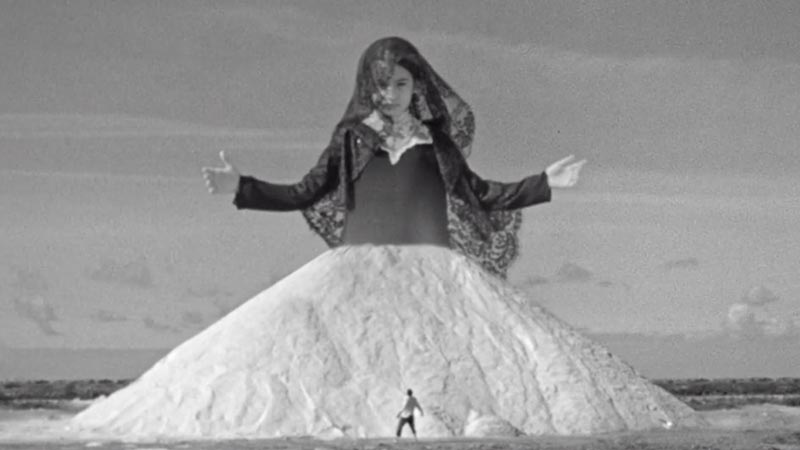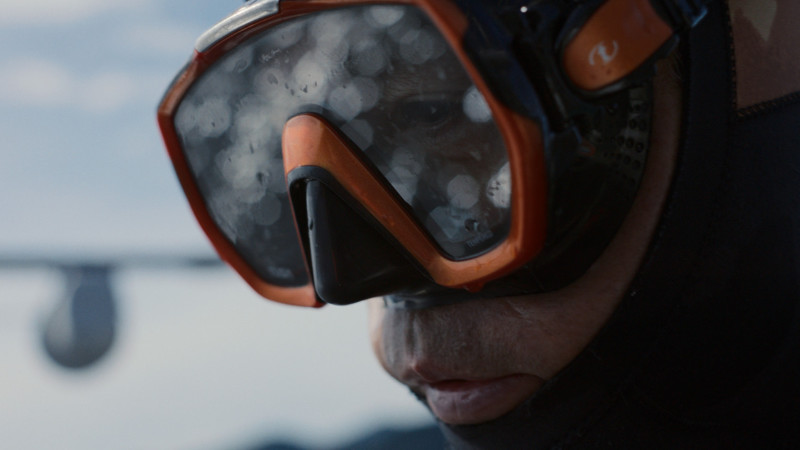The story of Giannis Antentokounmpo, the NBA star: Naija Odyssey
This is the Director’s Cut of the first short film ever created by Whatsapp and tells the story of Giannis Antentokounmpo, the NBA star: Naija Odyssey. A man who went from being stateless in Greece to become one of the most famous personalities in sports worldwide.
This is a story about identity – Giannis is lost between 2 worlds: his Nigerian heritage and his Greek life-, and a story about an immigrant family, about resilience and connection.
The film was shot in 3 countries: The US, Greece, and Nigeria, and is a free adaptation of Homero’s “Odyssey”. Co-directed by Rodrigo Inada and Nono Ayuso (Terra Cene). Rodrigo is a Brazilian-Japanese director, who has always felt stuck in the middle of 2 different cultures, and I am a Spanish person who moved to the UK without speaking the language and having no connections. So for us, this film is extremely meaningful because resonates with our own stories.

How did the idea for “Naija Odyssey” come about and what inspired you to create a short film about Giannis Antentokounmpo’s journey?
The initial concept for “Naija Odyssey” came about through the collaboration of the Translation NYC team, including Patrick, Jon, Alex, and Kirsten, and the creative team at WhatsApp, represented by Rodrigo Moran and Belén Márquez. They collectively conceived the concept of connecting Giannis Antetokounmpo’s story with the timeless epic of the Odyssey by Homer. After that we were so excited to bring in an idea that would shape that film into a fresh version of that story, but we wanted to still craft the story in an authentic way. Nono used to be a journalist, and we went and interviewed him before developing the script, we wanted to make sure that this story was told through Giannis’ words, but from there the development of the visuals ran free to represent his story.

“Naija Odyssey” is the first short film created by WhatsApp. How did the collaboration with WhatsApp come about, and what opportunities did it provide for the production of the film?
The collaboration with WhatsApp was a result of the creative teams’ shared vision and enthusiasm for the project. Their team was also consisted by multi-cultural creatives that were also from immigrant families, and somehow this story resonated with all of us. WhatsApp was amazing in providing us with support and resources to bring our big ideas to life. We were all aligned in the sense that we shouldn’t have the product so explicit, but it should be just naturally integrated in the story, which it was, as Giannis’ told us that he used Whatsapp to talk to his family while he was in Miuwaulkee for the first time when he got drafted by the NBA. Overall they were quite open to our ideas to develop this story.
Can you tell us about the process of shooting the film in three different countries? What were some of the challenges you faced and how did you overcome them?
The shoot of “Naija Odyssey” spanned over three different countries: Greece, Nigeria, and the USA (specifically, Milwaukee). This ambitious journey involved pre-production, shooting, and post-production in each location, which was tricky because we were always working with different crews in every leg of the project, apart from us, the producers (Kimi Portner and Luke Plaister big shout out to them) and the DOP Andy Catarasino, so it felt like doing three different films production-wise.
And since this wasn’t a documentary set up, the preps were insanely challenging with the times we had. With set builds, studio days, long shots. We also did a one shot sequence in Lagos. For us was this was one of the highlights of the project (6:53 – 9:19). With more than 400 actors blocked in the sequence, we wanted to create an immersive experience for whoever was watching it, while Giannis narrated the film we wanted the viewer to dive in a shot that didn’t have cuts for almost 2:30min, it took us 2 days, one for prepping and another one for the shoot for that one shot.

“Naija Odyssey” draws parallels to Homer’s “Odyssey” and explores themes of identity, immigration, and resilience. How did you incorporate
these themes into the film, and what message did you hope to convey to the audience?
We tried to incorporate these themes into the film through the narrative, visuals, and metaphorical elements. The intention was to create a story that would resonate with viewers who have experienced the sense of being caught between two cultures or places. The film aimed to convey the power of human connection, the significance of cultural heritage, and the ability to overcome adversity. With this themes we tried to create visual metaphors to those feelings.
As co-directors, both coming from multicultural backgrounds, how did your personal experiences influence the storytelling and creative choices in the film?
For us, the project was really interesting because this was a way to portray a really beautiful and powerful identity journey of a person that felt “stuck in the middle” between two countries and two identities. We were hoping to create a script that could resonate with other people that somehow in different situations and places at some point felt in the same way. What attracted us in this piece was also the human connection and the culture that passes from generation to generation that we always carry with us. As immigrants and with multiple backgrounds we also feel extremely excited about telling an immigrant story. (Nono Ayuso is an Andalusian director that moved to London and Rodrigo Inada is a japanese-brazillian director that grew up in Brazil but never been to Japan).

Giannis Antentokounmpo’s story is one of remarkable success and overcoming adversity. How did you work with Giannis to capture the essence of his journey and portray it authentically on screen?
Working closely with Giannis Antetokounmpo, we immersed ourselves in conversations with him, listening to his stories about his childhood, fatherhood, and the intricate path he traversed to shape his identity. These personal conversations served as the foundation for the scriptwriting process and guided the development of the film’s narrative. After developing the script, there were a couple more times where we met to record the rest of the voice over. But his story was the starting point of creating the base for the script.
How did you approach the visual and aesthetic aspects of the film to enhance the storytelling and create an immersive experience for the viewers?
We wanted to be authentic with the story we were telling, but at the same time we wanted to create something that went away from just recreating the story exactly the way it happened. We wanted to create an immersive experience that represented his feelings in his journey, and portray them in an approach, of surrealist nightmares and dreams.
The look we wanted to achieve in this piece was more based on movies we like, photographs, and the feelings that the piece was asking for. We feel we really wanted to stay away from a trendy look and go for something that could be a bit more timeless. We joke about how our films sometimes feels like they were stored in a drawer for years and then found as an archive, but with this one, we felt like creating a different look to tell this story.
A lot of the story that we are telling happened in the past, but at the same time some of the moments were more like portraying a mental state or feeling that was felt years ago by Giannis, as a kid, as a teenager, and for us, it made so much sense to come up with a look that didn’t felt modern either old. The cinematographer Andy Catarasino and us, worked together to achieve a look that we were extremely happy with, we shot in Sony Venice and with Arri DNA signature primes and the plan was to try to achieve the sharpest look we could on camera and then print it on 35mm film.We did a couple of tests with the film print, the idea was to print it on 35mm Ektachrome, but we tested it as well on Vision 3 negative 35mm film. We ended up mixing, some parts were in positive film, some in negative, and some were printed first in positive and afterward re-print on negative.

What do you hope viewers will take away from “Naija Odyssey” and how do you think the film contributes to the broader conversation around immigration, identity, and resilience?
We really hope “Naija Odyssey” leave a lasting impact on its viewers, fostering connection, empathy, and inspiration with the story. We feel that through its narrative and theme, it could potentially broaden conversations and discussions about immigration, identity and resilience throughout the process. More than broaden the conversation, we just hope that this film can make people relate to it, and get inspired from it. We hope that people can watch it, and somehow find something in the film that connects with them, or their stories somehow.
Being an immigrant or part of an immigrant family is not an easy thing in most of the situations, and Giannis’ story is a very difficult story, but also really inspiring story of an immigrant family. And with that we hope people can relate to it in different levels.
In this film we wanted to highlight the power of cultural heritage, the challenges faced by immigrants, and the indomitable spirit required to navigate through life’s obstacles. The idea of the film was to invite viewers to reflect on their own journeys and find strength in their unique identities.
What are you favorite short films?

We love talking about favorite short films! It’s always inspiring to see how these little gems can pack such a punch. Our favourites are The Big Shave , by Scorsese, it is so intense but also carry so much in just one scene, so much meaning and metaphor behind one single scene.
La Jeteé, Chris marker
Next Floor, Denis Villeneuve (Watch on FS)
Piper, Alan Barillaro




